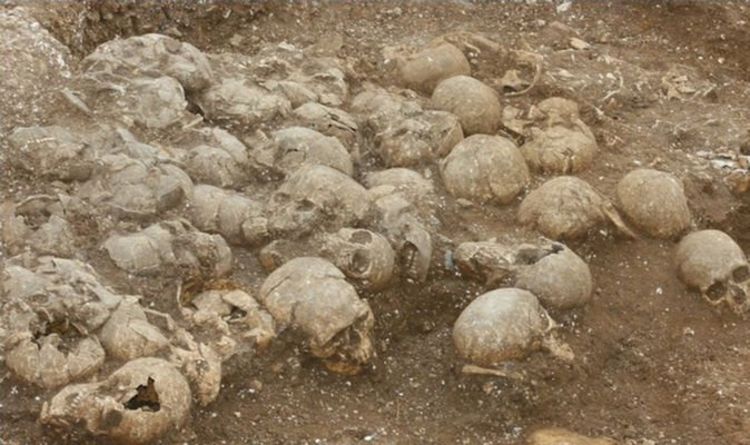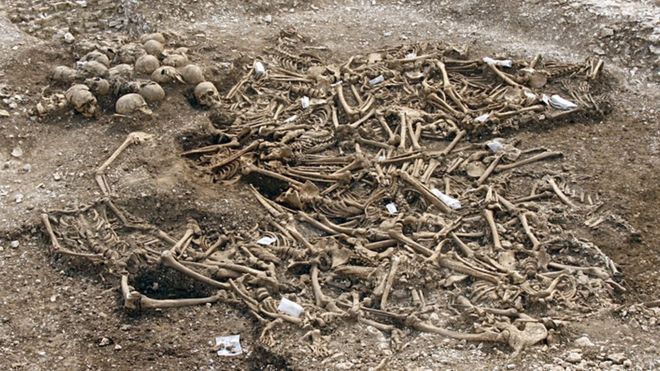Extremely rare mass grave of decapitated Vikings found in the UK
Archaeologists made the gruesome discovery of 51 Viking corpses buried in the UK – with researchers claiming they may have been killed in sacrifice. Archaeologists believed that the violent killing happened 1000 years ago – the 51 skeletons had languished near Weymouth, Dorset.
Oxford Archaeology removed the skulls which had been placed together in one part of a pit, and the bodies which had been thrown roughly into a heap a few feet away.
Chemical analysis was used to study the teeth from 10 men – and led to a remarkable piece of information.
The men are thought to have grown up in an environment much colder than the UK, with one set of remains believed to be from the Arctic Circle.
Carbon dating showed they were buried between 910 and 1030AD, a time when England was being unified under Saxon kings and when Vikings from Denmark had begun a second wave of raids on the South Coast.
Oxford Archaeology project manager David Score said: “To find out that the young men executed were Vikings is a thrilling development.
“Any mass grave is a relatively rare find, but to find one on this scale, from this period of history, is extremely unusual.”


Researchers had no doubts that the bodies belonged to Vikings.
Evidence suggested they were captured by British soldiers after arriving in the country to raid.
The blows to the back of their necks were so fierce that the swords cut into the jaws and collarbones.
One man had wounds to his hands – indicating that he grabbed for the blade in a futile bid to save himself. Others suffered blows to pelvis, stomach and chest.
There were more bodies than skulls, leading to speculation that three dismembered heads were displayed on stakes.
The first to arrive in Britain were after loot – and they saw the undefended monasteries, which boasted silver-chalices, gold crosses and bejewelled books, as key targets.
Dr Richard Hall, director of archaeology at the York Archaeological Trust, said: “Vikings would be the same build and height as us.
“But there would be few women over 35 because so many died in childbirth. And if you lived to 50 you were doing very well.”





